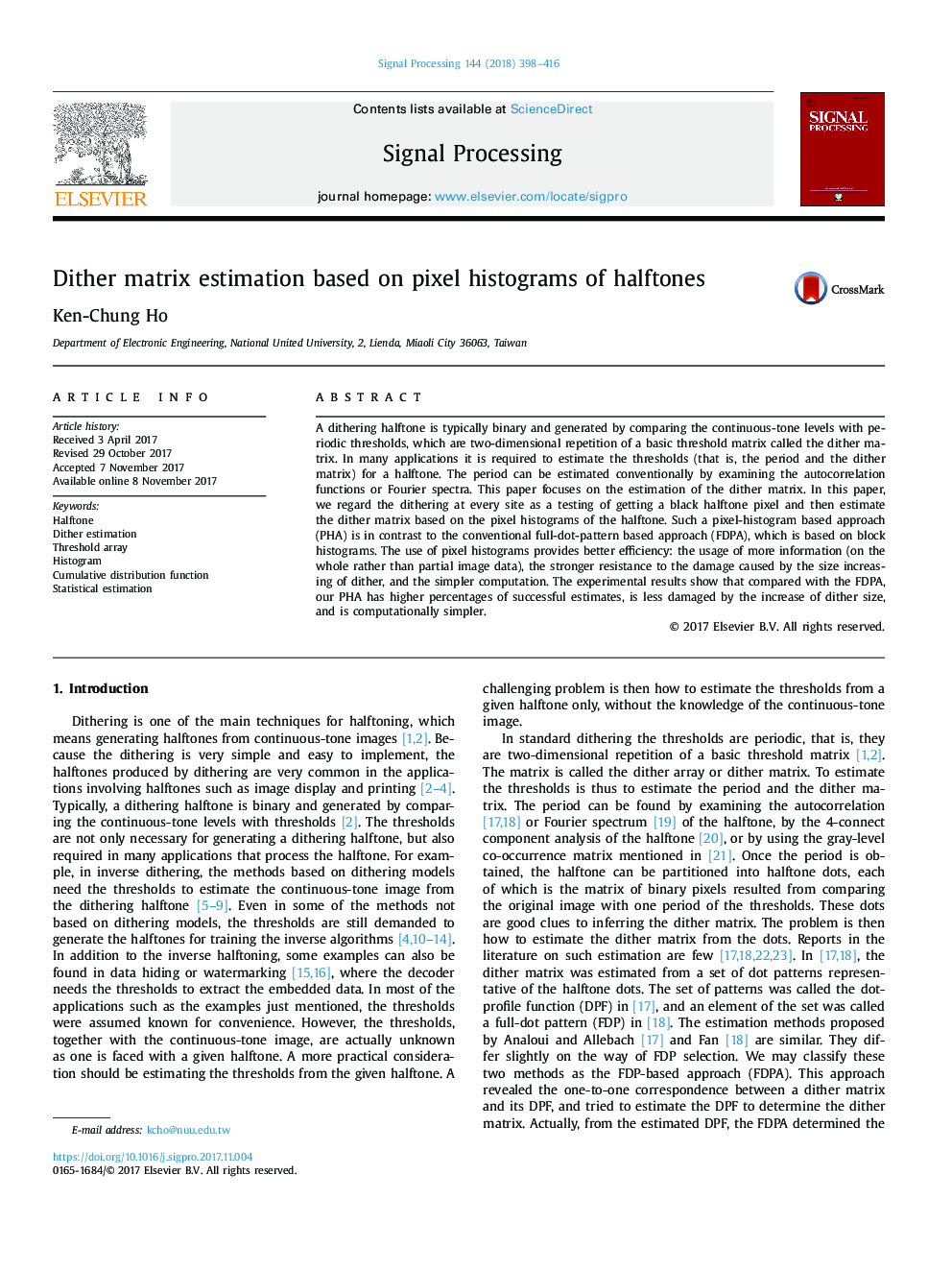| Article ID | Journal | Published Year | Pages | File Type |
|---|---|---|---|---|
| 6957994 | Signal Processing | 2018 | 19 Pages |
Abstract
A dithering halftone is typically binary and generated by comparing the continuous-tone levels with periodic thresholds, which are two-dimensional repetition of a basic threshold matrix called the dither matrix. In many applications it is required to estimate the thresholds (that is, the period and the dither matrix) for a halftone. The period can be estimated conventionally by examining the autocorrelation functions or Fourier spectra. This paper focuses on the estimation of the dither matrix. In this paper, we regard the dithering at every site as a testing of getting a black halftone pixel and then estimate the dither matrix based on the pixel histograms of the halftone. Such a pixel-histogram based approach (PHA) is in contrast to the conventional full-dot-pattern based approach (FDPA), which is based on block histograms. The use of pixel histograms provides better efficiency: the usage of more information (on the whole rather than partial image data), the stronger resistance to the damage caused by the size increasing of dither, and the simpler computation. The experimental results show that compared with the FDPA, our PHA has higher percentages of successful estimates, is less damaged by the increase of dither size, and is computationally simpler.
Related Topics
Physical Sciences and Engineering
Computer Science
Signal Processing
Authors
Ho Ken-Chung,
